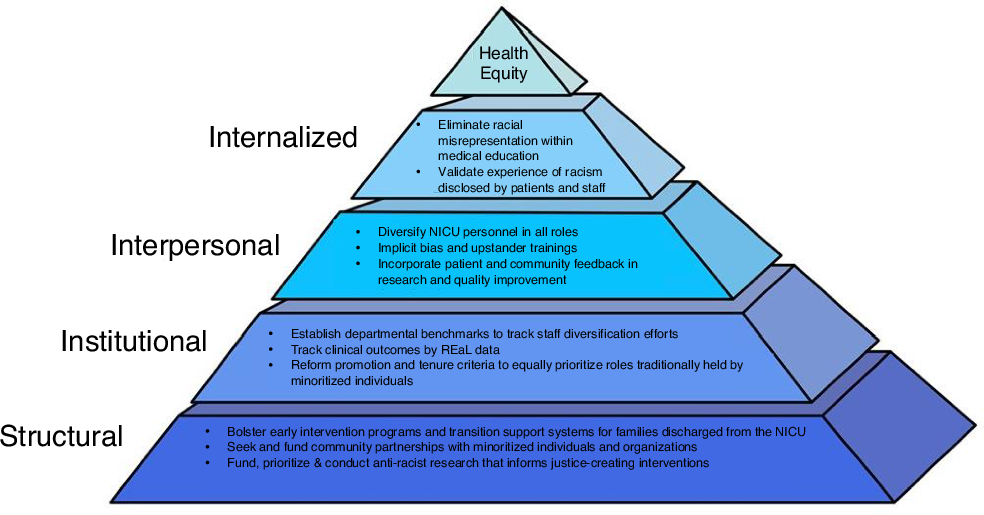Macroeconomic income inequality, brain structure and function, and mental health – Nature

Report on the Neurobiological Impact of Income Inequality on Adolescent Mental Health
Executive Summary
This report details a study investigating the association between societal-level income inequality and adolescent neurodevelopment and mental health, framing the findings within the context of the United Nations Sustainable Development Goals (SDGs). Using data from over 8,000 children in the United States, the study reveals that higher state-level income inequality is linked to significant alterations in brain structure and functional connectivity. These neurobiological differences mediate the relationship between structural inequality and an increase in mental health problems. The findings establish income inequality as a critical societal-level determinant of health, independent of individual socioeconomic status. This directly impacts the achievement of SDG 3 (Good Health and Well-being) and SDG 10 (Reduced Inequalities), highlighting the need for policy interventions that address economic disparities to foster healthy neurodevelopment and protect youth mental well-being.
Introduction: Contextualizing Neurodevelopment within the Sustainable Development Goals
Economic inequality is a significant barrier to sustainable development, with profound implications for public health. This issue is central to SDG 10 (Reduced Inequalities), which calls for reducing inequality within and among countries. Concurrently, SDG 3 (Good Health and Well-being) aims to ensure healthy lives and promote well-being for all at all ages, with a specific target (3.4) to promote mental health. This study investigates the intersection of these two critical goals by examining how structural income inequality becomes biologically embedded during adolescence, a sensitive period of neurodevelopment, thereby heightening the risk for psychopathology. By exploring the neurobiological mechanisms that link societal economic structures to individual health outcomes, this research aims to provide evidence for policies that can advance both health equity and economic justice.
Methodology Overview
Data Source and Participants
The analysis utilized population-based data from the Adolescent Brain Cognitive Development (ABCD) study, a large-scale, longitudinal study in the United States. The final sample included over 8,000 children aged 9–10 years from 17 states.
Key Metrics
- Societal-Level Factor: State-level income inequality was measured using the Gini coefficient, a standard index of income distribution.
- Neurobiological Outcomes: High-resolution magnetic resonance imaging (MRI) was used to assess whole-brain and regional measures of cortical thickness, surface area, and volume. Resting-state functional MRI was used to measure functional connectivity within and between 12 major brain networks.
- Health Outcome: Mental health problems were assessed via youth self-report at 6-month and 18-month follow-up intervals.
Analytical Approach
Linear mixed-effects models were employed to assess the association between the Gini coefficient and the various brain metrics, controlling for individual-level factors (e.g., household income, parental education) and other state-level confounders (e.g., incarceration rates, social assistance policies). Subsequently, mediation analyses were conducted to determine if the identified brain metrics could explain the pathway from income inequality to subsequent mental health problems.
Key Findings: The Neurobiological Consequences of Inequality
The study’s results demonstrate a clear and significant link between macroeconomic inequality and adolescent brain development, providing a biological basis for how societal conditions impact individual health, thereby challenging the progression of SDG 3 and SDG 10.
Impact on Brain Structure
- Higher state-level income inequality was significantly associated with reduced overall cortical volume, lower average cortical thickness, and smaller total surface area.
- These reductions were not localized but were observed in widespread patterns across frontal, temporal, parietal, and occipital lobes.
- These findings suggest that living in a more unequal society is associated with neurodevelopmental differences in brain regions critical for executive function, emotion regulation, and social cognition.
Impact on Brain Functional Connectivity
- Higher inequality was linked to altered functional connectivity within and between multiple brain networks.
- Significant alterations were noted in networks essential for higher-order cognition and attention, including the default mode network (DMN), dorsal attention network (DAN), and frontoparietal network (FPN).
- These disruptions in brain communication pathways may underlie difficulties in cognitive and emotional processing observed in youth from more unequal environments.
Neurobiological Mediation of Mental Health Outcomes
The analysis identified specific neurobiological pathways through which inequality translates into adverse mental health outcomes.
- Higher income inequality was associated with adverse brain metrics, specifically lower total cortical volume, reduced total surface area, and altered (less negative) connectivity between the DMN and DAN.
- These specific neurobiological markers were, in turn, significantly associated with a greater number of mental health problems reported by adolescents at both 6-month and 18-month follow-ups.
- This mediation pathway provides tangible evidence of how the societal failure to address SDG 10 can inflict biological harm that directly undermines the mental well-being targets of SDG 3.
Policy Recommendations for Achieving SDGs 3 and 10
The findings strongly suggest that policies aimed at reducing income inequality are a form of public health intervention. To make meaningful progress toward SDG 3 and SDG 10, a multi-pronged approach is necessary.
Structural and Economic Reforms
- Implement progressive taxation and wealth redistribution policies to reduce the concentration of income at the highest levels.
- Strengthen social safety nets and universal access to essential services, including healthcare and social assistance, to buffer families from economic stressors.
Community and Social Interventions
- Invest in public infrastructure and community-building initiatives that foster social cohesion, trust, and social capital, which are known to be eroded by high inequality.
- Promote inclusive school environments that minimize socioeconomic disparities and emphasize belonging and connectedness. Such efforts support not only mental well-being (SDG 3) but also create better learning conditions, contributing to SDG 4 (Quality Education).
Conclusion
This report concludes that structural income inequality is a potent social determinant of health with measurable neurobiological consequences for adolescents. The biological embedding of societal inequality in the developing brain creates vulnerabilities that lead to adverse mental health outcomes. Therefore, addressing income inequality is not merely an economic objective but a fundamental public health imperative. Achieving the vision of the Sustainable Development Goals, particularly for a world with good health, well-being, and reduced inequalities, requires urgent and decisive policy action to create more equitable societies that support healthy neurodevelopment for all children.
Analysis of Sustainable Development Goals in the Article
1. Which SDGs are addressed or connected to the issues highlighted in the article?
-
SDG 3: Good Health and Well-being
- Explanation: The article is fundamentally about health, specifically mental health. It investigates the “adverse mental health outcomes during adolescence” and the “neurobiological mechanisms linking structural inequality to mental health disparities.” The core of the research is to understand how a societal factor (income inequality) impacts the “mental health and wellbeing outcomes” of children and adolescents, which is a central concern of SDG 3. The study’s conclusion that inequality becomes “biologically embedded to influence mental health” directly aligns with the goal of ensuring healthy lives and promoting well-being for all at all ages.
-
SDG 10: Reduced Inequalities
- Explanation: This is the primary societal issue the article addresses. The entire study is designed to investigate the effects of “income inequality, a structural property of societies characterized by the unequal distribution of resources.” The research uses the “Gini coefficient” as the main independent variable to measure state-level income inequality. The discussion section explicitly calls for “policies aimed at reducing inequality” and frames structural inequality as a “harmful social determinant” that must be addressed to improve population health, which is the core mission of SDG 10.
2. What specific targets under those SDGs can be identified based on the article’s content?
-
Target 3.4: Promote mental health and well-being
- Explanation: This target aims to “promote mental health and well-being.” The article directly contributes to this by identifying income inequality as a major risk factor for poor mental health in adolescents. It finds that “higher structural income inequality” is associated with “greater mental health problems” and explores the neurobiological pathways of this association. The research underscores the need for societal-level interventions to protect and promote mental health, as called for in this target.
-
Target 10.2: Promote universal social, economic, and political inclusion
- Explanation: This target seeks to “empower and promote the social, economic and political inclusion of all, irrespective of… economic or other status.” The article’s finding that income inequality has detrimental effects “independent of individual socioeconomic status” suggests that high inequality creates a social environment that is inherently exclusionary and harmful to the well-being of its members, particularly children. By eroding “social cohesion” and increasing “social comparison,” inequality undermines the foundation of an inclusive society.
-
Target 10.4: Adopt policies to achieve greater equality
- Explanation: This target calls for the adoption of “policies, especially fiscal, wage and social protection policies, [to] progressively achieve greater equality.” The article’s “Implications for policy and intervention” section directly supports this by recommending “economic reform including progressive taxation, increased social safety nets and universal healthcare… to alleviate the stressors that disproportionately affect children in more unequal societies.” This provides a clear, evidence-based argument for the exact types of policies mentioned in Target 10.4.
3. Are there any indicators mentioned or implied in the article that can be used to measure progress towards the identified targets?
-
Gini Coefficient
- Explanation: The article explicitly uses the “state-level income inequality, indexed by the Gini coefficient” as its primary measure of inequality. The Gini coefficient is a standard statistical measure of income distribution and is a direct indicator for tracking progress on reducing economic inequality (SDG 10). The study’s methodology relies entirely on this indicator to quantify the “unequal distribution of resources” within different US states.
-
Prevalence of Mental Health Problems
- Explanation: To measure mental health outcomes (relevant to SDG 3, Target 3.4), the study utilizes “youth-reported symptoms of psychopathology on the Brief Problem Monitor.” It specifically analyzes the “total problems raw score, which included scores on internalizing, externalizing and attention symptoms.” This provides a quantifiable indicator of the mental health burden in the adolescent population. The article also refers to “elevated rates of depression, anxiety and behavioral disorders” as key outcomes, implying that the prevalence of these specific disorders can serve as indicators.
-
Neurobiological Markers
- Explanation: While not traditional socioeconomic indicators, the article identifies and measures specific neurobiological markers that are directly affected by inequality. These include “reduced cortical thickness and surface area” and “altered functional connectivity between multiple brain networks.” The study shows that these brain metrics mediate the link between inequality and mental health problems. Therefore, these biological markers could be considered novel, sensitive indicators of the hidden physiological impact of social and economic inequality on a population’s health.
4. Table of SDGs, Targets, and Indicators
| SDGs | Targets | Indicators |
|---|---|---|
| SDG 3: Good Health and Well-being | Target 3.4: By 2030, reduce by one third premature mortality from non-communicable diseases through prevention and treatment and promote mental health and well-being. |
|
| SDG 10: Reduced Inequalities |
|
|
Source: nature.com

What is Your Reaction?
 Like
0
Like
0
 Dislike
0
Dislike
0
 Love
0
Love
0
 Funny
0
Funny
0
 Angry
0
Angry
0
 Sad
0
Sad
0
 Wow
0
Wow
0
















































/environment-climate-change-and-health-(ech)/water-sanitation-hygiene-and-health-(wsh)/landfill-tuvalu-36092.tmb-1200v.jpg?sfvrsn=5c21fe40_1#)

.jpg.webp?itok=0ZsAnae9#)
























